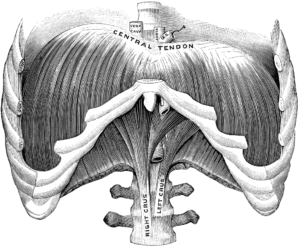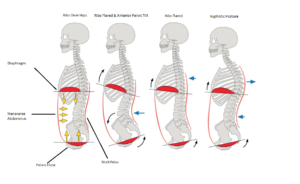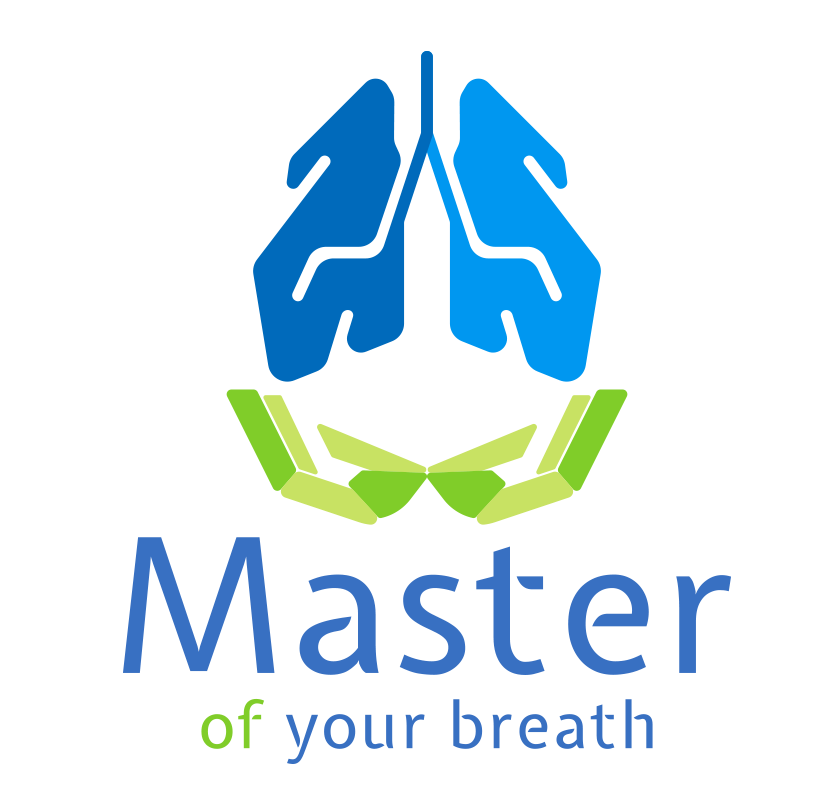Is there a perfect way to breathe?
In my opinion, there is no one-size-fits-all approach to breathing. Instead, it’s about understanding the different breathing possibilities available to us and learning to adjust our breathing in various situations or activities.
In this article, I will share my top five breathing points for transitioning from autopilot breathing to conscious breathing and improving breathing quality. Tip at the end of the article.

1# Nose breathing
I wanted to start with nose breathing as to my opinion it is the most important aspects to take into account in our breathing system. Below you will see several aspects explaining the why. And you can start right away … close your mouth and breath !! 🙂
- Improved Oxygen Intake: When you breathe through your nose, the air is warmed and moistened, making it easier for the lungs to absorb oxygen.
- Increased blood flow: Nitric oxide (NO) is a gas that is produced naturally in the body and has many important physiological functions, including regulating blood pressure, promoting blood flow, and supporting the immune system. In addition to these functions, nitric oxide also plays an important role in breathing. If you want to read more I linked an article.
- Filtering and Protection: The nose has tiny hairs called cilia, which help filter out dust, allergens, and other particles from the air. The nasal passages also produce mucus, which traps bacteria and other harmful substances before they can enter the lungs.
- Improved Lung Function: Nose breathing helps to regulate the amount of air that enters the lungs, which can improve lung function and oxygen uptake.
- Relaxation and reduced Stress: Nose breathing has been shown to activate the parasympathetic nervous system, which can promote relaxation and reduce stress levels. Improved
- Sleep: Nose breathing can improve sleep quality by reducing snoring and sleep apnea, and promoting better oxygenation of the body during sleep. I will be writting an article to go more into depth in that topic with some tips to work on it as it is a serious matter.
2# Belly breathing
Belly breathing, or diaphragmatic breathing (see diaphragm drawing below)uses the large muscle at the base of your lungs to take deep, slow breaths. This technique provides numerous benefits for your physical and mental wellbeing.

- Increased oxygenation: Belly breathing allows for deeper and more efficient breathing, which can help to increase oxygen intake and improve overall lung function.
- Reduced stress: Belly breathing has been shown to activate the relaxation response, which can reduce feelings of stress and anxiety as it is linked to the parasympathetic nervous system (video instagram). It can also lower heart rate and blood pressure, and promote feelings of calm and relaxation.
- Improved Digestion: Belly breathing can stimulate the digestive system and improve gut motility, which can help to reduce symptoms of indigestion, constipation, and other digestive disorders.
- Strengthened diaphragm: Regular belly breathing can help to strengthen the diaphragm muscle, which can improve breathing function and support overall respiratory health.
3# Chest breathing
The infamous one 🙂 Technically there is nothing wrong with breathing through the chest. It is part of our breathing system. Try to get a deep inhale starting in the belly then through the chest you will most likely feel better and a bit more energized !(did you do it?).
So what is the matter with chest breathing?
Breathing through the chest is a natural part of our respiratory system. However, breathing through the belly first and then through the chest can be more effective in promoting deeper breathing and providing a sense of energy and relaxation.
The main issue with breathing exclusively through the chest is that it can be inefficient and lead to feelings of fatigue and breathlessness. By relying solely on the chest muscles to breathe, we are not utilizing the full potential of our respiratory system and decrease the intake of oxygen.
This will lead to shallow breathing, which can also create a build up of CO2 in the bloodstream (hypercapnia), leading to dizziness, fatigue and shortness of breath.

Additionally, poor posture can exacerbate the problem. Our tendency to sit for prolonged periods of time, coupled with a forward head posture (drawing skeleton far right/ source unknown), can cause our ribcage to collapse and restrict our breathing.
To improve breathing function and overall health, it’s important to practice both belly and chest breathing, and pay attention to maintaining good posture throughout the day using breathing as well.
4# Breathing capacity
Breathing capacity refers to the amount of air that can be inhaled and exhaled during a single breath. Using the whole breathing system involves engaging both the chest and belly muscles to achieve deeper, more efficient breathing.
When we breathe, the diaphragm and intercostal muscles in the chest and ribcage work together to draw air into the lungs and then expel it. By utilizing the full capacity of our breathing system, we can improve our lung function and overall respiratory health.
Improving breathing capacity can have a range of benefits for our physical and mental health. By taking in more oxygen, we can increase our energy levels, reduce feelings of fatigue, and improve mental clarity and focus.
Deep breathing exercises can also help to reduce stress and anxiety and more. It’s important to note that building breathing capacity takes time and practice. I recommended to start slowly and gradually work up to longer periods of deep breathing exercises.
This is one of my major focus on helping people with breathing. I made up some practice either online or physical that are focusing on improving the full breathing capacity. If you are interested I added a link of my next online session (“wednesday evening session”). If you are not a big fan of online which I can understand, I also do it physically in my practice in Rotterdam.
5# Autopilot breathing
Autopilot breathing is a term used to describe the unconscious, automatic breathing pattern that most people use during their daily activities. This type of breathing is characterized by shallow, rapid breaths that do not fully engage the diaphragm and other respiratory muscles.

Autopilot breathing is often associated with stress and anxiety, as well as poor posture and other lifestyle factors. While autopilot breathing can be useful in certain situations, such as during physical activity or in response to stress, it can also be detrimental to our overall health and well-being. Shallow breathing can lead to a buildup of carbon dioxide in the body, which can cause feelings of fatigue, dizziness, and mental fog (like I mentioned above).
Additionally, shallow breathing can lead to tension and strain in the neck and shoulders, as well as other parts of the body. To overcome autopilot breathing and improve respiratory function, it’s important to practice deep breathing exercises on a regular basis.
- My tip for you, every time you think about it while sitting, take 2 or 3 deep inhale going from the belly and the chest, then try to breath slowly in the belly for as long as you can control/think 🙂
Try whenever you think about it to get in control of your breathing, that is a great start to control stress and focus.
Do that as often as you can !!
In conclusion, there is no one-size-fits-all approach to breathing, and it’s essential to understand the different breathing possibilities available to us and learn to adjust our breathing in various situations or activities.
Nose breathing, belly breathing, and chest breathing all have their benefits, and it’s essential to practice each technique to improve breathing capacity and overall respiratory health.
By using the full capacity of our breathing system, we can increase oxygen intake, reduce stress and anxiety, improve cardiovascular health, and promote relaxation and calmness.
Regular practice of deep breathing exercises involving good posture can also help to improve breathing function and capacity.


A wonderful serenity has taken possession of my entire soul, like these sweet mornings of spring which I enjoy with my whole heart. I am alone, and feel the charm of existence in this spot, which was created for the bliss of souls like mine. I am so happy.
my dear friend, so absorbed in the exquisite sense of mere tranquil existence, that I neglect my talents.
I feel that I never was a greater artist than now. When, while the lovely valley teems with vapour around me, and the meridian sun strikes the upper surface of the impenetrable foliage of my trees, and but a few stray gleams steal into the inner sanctuary.